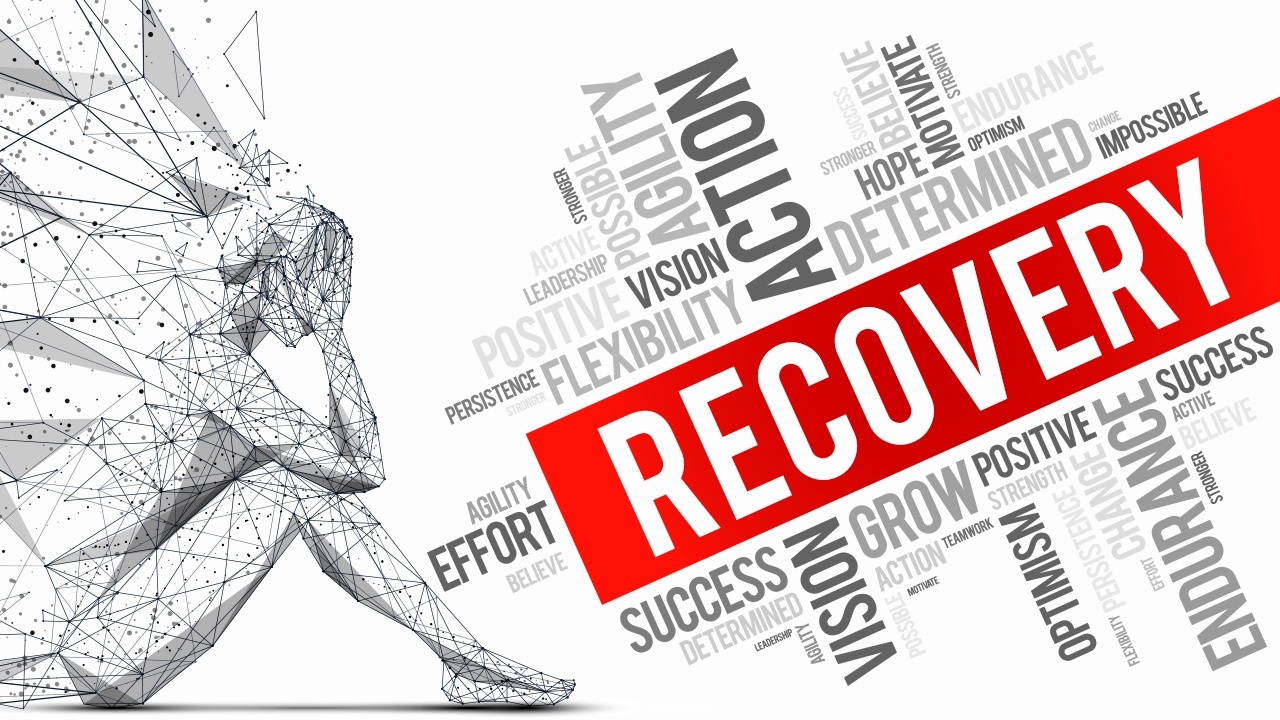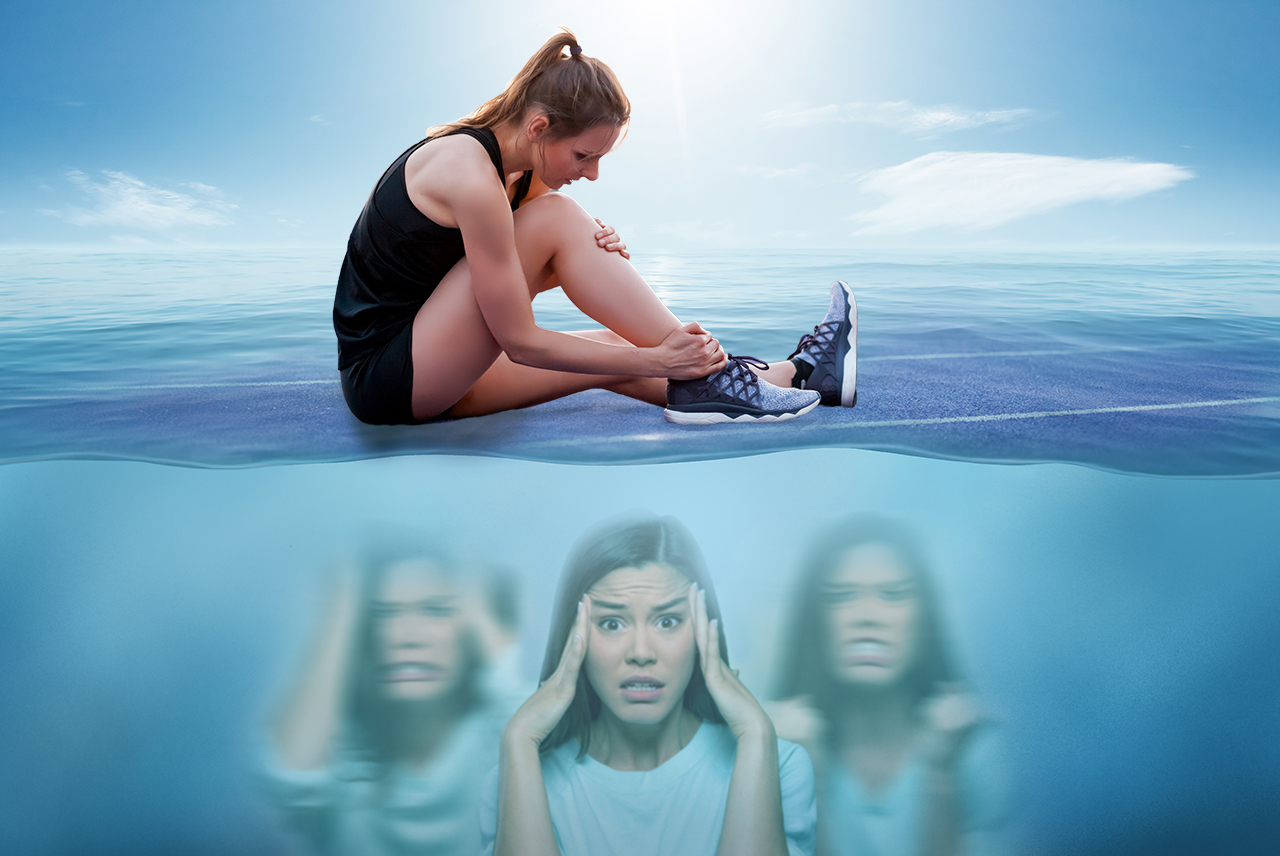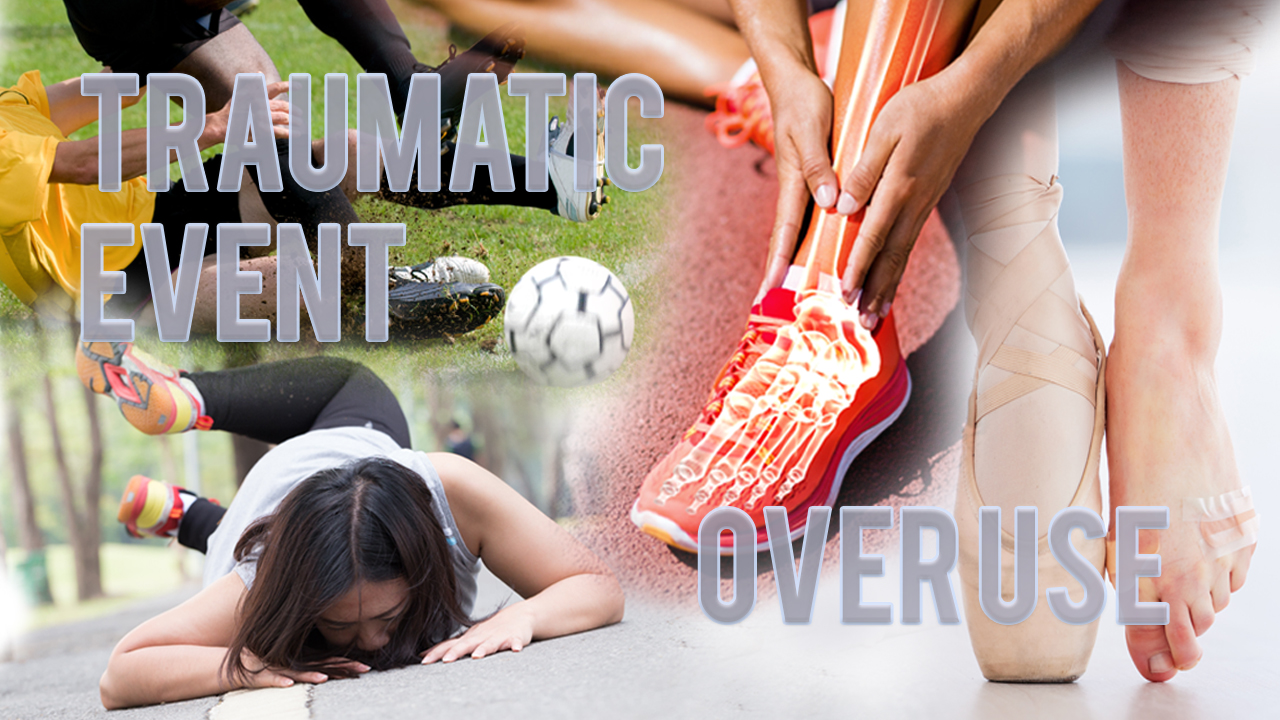Biopsychosocial approaches for injured performers

In this article we discuss utilising biopsychosocial frameworks for effective diagnosis, treatment, and recovery planning for injured dancers and athletes.
Experiencing an injury can evoke a range of difficult emotions and potentially lead to negative psychological responses and social implications that in turn lead to maladaptive illness behaviours1-3. Beyond physiological trauma, resultant psychological and social effects often impede recovery, extending the process beyond the timeline needed for physiological repair. This increases the chance of progression to a chronic injury state which is multifactorial and notoriously complex to resolve4. This is largely a ubiquitous phenomenon. However, for physical performers such as dancers and athletes, whose identity is often defined by their ability to perform and express themselves physically, the impact of injury can more severely affect their health and well-being5. This is due in part to the relationship between emotions and physical performance6 and how much it matters. The coping strategies of an individual and the support network they have at their disposal, play a key role during the recovery process, and influence the likelihood of positive outcomes7. It is therefore important to consider all aspects of an injured performer’s well-being when implementing treatment strategies and planning their reintegration to their performance environment.

The biopsychosocial model
Ever since the World Health Organisation’s aspirational definition of health was set out in the International Health Conference (1946)8, the interdependency of physical, mental, and social well-being has been rigorously investigated9. While the definition and hierarchical value of these pillars of health are still widely debated, one overarching conclusion can be drawn from the literature; physiological, psychological, and social factors all contribute to the acquisition, restoration, and maintenance of health and well-being. This is epitomised by Engel’s biopsychosocial model (1977)10, which emerged to address the limitations of the still dominant biomedical model. While the efficacy of the biopsychosocial model has been challenged11,12, its basis is now well established and advocated within many pragmatic treatment approaches, particularly those that address chronic injury, pain, and disease13-16. Both the successes, and failings of this model highlight the importance of working holistically and the need to provide adequate resources to be able to do so effectively16. Treatment protocols that attend to the psychological and social needs of an individual recovering from a physical injury alongside the physiological concerns, have been shown to improve the effectiveness of recovery17.
Self-efficacy - Why is it so important for recovering performers?
For athletes and performing artists whose physical capacity often defines their introspective and social identity, the implications of physical injury on all areas of their well-being can be extremely challenging18,19. Therefore, careful consideration should be given to all aspects of an injured performer’s well-being throughout the rehabilitation process. High levels of self-efficacy can make all the difference when recovering from an injury or illness, particularly for performers. Self-efficacy is one's belief in their ability to implement effective strategies that provide solutions to specific problems. Physical efficaciousness and expression are especially important for performers, with high levels of self-efficacy correlating with successful physical performance, it is also a key determinant for effective recovery from injury20-22. In addition to task related self-efficacy, higher ‘coping self-efficacy’ (the belief in one’s ability to implement effective coping strategies) is important for rehabilitation adherence23.
Mitigating negative affect
Unfortunately, self-efficacy can be negatively affected when experiencing an injury24-26. Aside from reducing the efficiency of the rehabilitation process, low levels of self-efficacy may present psychological barriers to recovery which can even influence effectiveness of medical treatments27. As well as loss of confidence, any perceived reduction in autonomy and relatedness will have compounding negative implications for motivation28. Treatment protocols should therefore include strategies to evaluate and restore self-efficacy and address any other encumbering psychological responses to acute injury. Approaches that establish effective coping strategies19, bolster motivation29 and implement structured goals30-32 are more likely to facilitate positive recovery outcomes for performers. Again, we see the importance of implementing structured goals and establishing positive motivational climates with those we work with. (check out the ‘SMARTER goal setting’ tutorial in the Professional membership area)
Looking below the surface
It is important to appreciate that an injury is more than a collection of physiological clinical findings2. However, defining and treating injuries in this way is common within a biomedical framework and can lead to inaccurate or incomplete diagnosis and ineffective treatments10,16. It can often be difficult to link the presence or severity of symptoms with clinical findings13,14, particularly once an injury becomes chronic. Psychosocial implications and their influence on subjective experience should be considered alongside the presence or absence of clinical findings as part of the diagnostic process. Doing so will help provide a fuller picture of the state of injury and what needs to be addressed within the rehabilitation process.

Another common practice is to define injury presence based on effect, by assessing loss of functionality or disability. Caution should be exercised when using an individual’s state of functioning alone, or as the key determinant in establishing the presence and severity of an injury. Such evaluations are often skewed by what is at stake for the injured person and other stakeholders in their ability to perform1,3. Despite their limitations, such evaluations are often used in dance33 and sporting performance settings34,35. This is highly unsatisfactory from a physiological36,37 and psychological5,38,39 perspective. Such practices can result in physiological damage and psychosocial impacts going unreported by a performer. This in-turn can lead to injuries becoming chronic, the adoption of maladaptive coping strategies and further negative impacts to the performer’s well-being40-42.
When working with performers it is important to understand, that in performance settings there is always a lot at stake! Therefore, considering what is at stake for the performer and those around them is incredibly important when considering the presence and severity of an injury. How you approach any intervention or training with that performer should reflect that consideration.
The mechanism of injury
How an injury occurred is important for biomedical and biopsychosocial assessments alike, influencing diagnosis, prognosis and ultimately treatment. Traumatic events like a trip or fall usually result in sudden, significant loss of physical ability, signs of physiological damage and moderate to high levels of acute pain. The overt physical trauma that typifies such injuries makes them obvious candidates for a biomedical treatment approach. However, considering the wider psychosocial implications will yield better outcomes than traditional medical interventions alone19,29,31. In contrast, accumulative injuries (often referred to as “overuse injuries”) usually develop gradually overtime, often a consequence of continual misuse or overuse of musculoskeletal structures. Typically, such injuries are mildly painful and only partially restrictive. Consequently, they may not initially be categorised as an injury at all33. This type of injury is therefore more likely to lead to the adoption of maladaptive coping strategies, that initially enable a performer to work through the worsening pain and dysfunction but ultimately collapse as the injury and its negative effects progress. Such coping behaviour is often reinforced through normative social influence25,40, which can make recovery more difficult. This highlights the importance of adopting positive holistic approaches to well-being within education and other environments that influence sociocultural development within dance and sport41-44.

The mechanism of an injury should always be taken into consideration when evaluating the psychological and social impact of an injury40. Sudden physiological damage that occurs with traumatic event induced injuries result in equally abrupt psychological and social consequences for the injured person. While this may be initially challenging, the tangible relationship between cause and effect, make it easier to rationalise the emotional experience and reach a point of acceptance, particularly if the injured performer can see a structured pathway back to their previous performance potential30,31. In contrast, injuries that develop over time through misuse or overuse, may negatively impact psychological and social frameworks so subtly as to go unnoticed. Coupled with the fact that these types of injury are often the product of faulty technique, there may be a compounding negative impact to self-esteem as this realisation comes to light19,29,45. It is therefore essential that any interventions addressing aspects of a performer’s competency, do so in a way that preserves self-esteem and develops performance self-efficacy. One way of ensuring this, is to focus on outcomes that extend beyond tissue repair and physiological recovery. Including positively framed goals that pursue enhancement of physiological and psychological attributes rather than simply getting back what has been lost, will help mitigate potential psychological barriers to recovery30,31,46,47. Framed positively, injuries can be viewed as an opportunity to learn, develop, and grow. Managed well, recovery provides a fertile environment for developing a performer's adaptability, robustness, and resilience, all essential attributes that separate the great from the good.
Looking for some inspiration, here are some great quotes:
“Sometimes it takes an injury to get your chance” - Chris Gronkowski
“A champion is defined by the adversity he overcomes” - Anderson Silva
“An injury is not just a process of recovery it’s a process of discovery” - Conor McGregor
“Turn every setback into a comeback” - Kobe Bryant
“Injuries are our best teachers” - Scott Jurek
Adopt a person-centred holistic approach
Positivity
Pragmatic, solution focused strategies that go beyond symptom reduction and tissue repair are essential in providing the best chance of full and lasting recoveries for injured performers. Positive psychology theories and frameworks28,48,49 should therefore be applied when developing strategies for diagnosis and rehabilitation. Doing so ensures psychosocial aspects of the injury are addressed and can also inform the methodological approach for physiological aspects of a rehabilitation programme.
Planning
Avoid procrastination like the plague, get SMART, get organised; plan and action that plan! Planning should also go beyond attending to damaged or dysfunctional physiology. Utilising what the performer ‘can do’ while recovering will support positivity and maintain a forward focused approach.
Capitalise, don’t squander time out from regular training activities. Implement active recovery strategies by considering the following within the goal plan and the subsequent recovery programme:
- Knowledge and self-awareness development objectives
- Improvements or even enhancement of existing technique
- Acquisition of novel skills and performance and coping strategies
- Maintenance or even enhancement of physiology unaffected by the injury
There are of course a couple of caveats to consider in relation to the objectives above: Ensure you are working within the physiological constraints of the injury and maintain relevance to the performer’s performance-centred objectives. There is little point in training something they don’t need as a performer just because they cannot currently train the things they do need!
Recovery
Formulating a structured SMART goal plan is therefore essential and it should include biopsychosocial outcomes that collectively constitute the attainment of a full recovery. One way to qualify a full recovery would be the reacquisition of flow state50 experiences during training and performance, especially when utilising the previously injured body parts.
In summary
Treatment protocols for injured performers should endeavour to promote positive subjective experiences, support individual character traits, and utilise enabling institutions51, alongside any necessary medical interventions52 and physiological enhancement strategies20. Understanding where we as practitioners can support such a paradigm through the interventions we offer, is something we should constantly question and strive to improve upon if we are to remain effective and relevant to those we work with.
References
- Pilowsky, I., & Spence, N. D. (1976). Illness behaviour syndromes associated with intractable pain. Pain, 2(1), 61-71. https://doi.org/10.1016/0304-3959(76)90047-6
- Waddell, G., Pilowsky, I., & Bond, M. R. (1989). Clinical assessment and interpretation of abnormal illness behaviour in low back pain. Pain, 39(1), 41-53. https://doi.org/10.1016/0304-3959(89)90174-7
- Prior, K. N., & Bond, M. J. (2010). New dimensions of abnormal illness behaviour derived from the Illness Behaviour Questionnaire. Psychology and Health, 25(10), 1209-1227. https://doi.org/10.1080/08870440903191417
- Lavand’homme, P. (2011). The progression from acute to chronic pain. Current Opinion in Anesthesiology, 24(5), 545-550. https://doi.org/10.1097/ACO.0b013e32834a4f74
- Aron, C. M., Harvey, S., Hainline, B., Hitchcock, M. E., & Reardon, C. L. (2019). Post-traumatic stress disorder (PTSD) and other trauma-related mental disorders in elite athletes: a narrative review. British Journal of Sports Medicine, 53(12), 779-784.
- Lazarus, R. S. (2000). How emotions influence performance in competitive sports. The Sport Psychologist, 14(3), 229-252. https://doi.org/10.1123/tsp.14.3.229
- Folkman, S., Lazarus, R. S., Dunkel-Schetter, C., DeLongis, A., & Gruen, R. J. (1986). Dynamics of a stressful encounter: cognitive appraisal, coping, and encounter outcomes. Journal of Personality and Social Psychology, 50(5), 992. https://doi.org/10.1037/0022-3514.50.5.992
- International Health Conference. (1946). Constitution of the World Health Organization. [Online]. http://apps.who.int/gb/bd/PDF/bd47/EN/constitution-en.pdf
- Breslow, L. (1972). A quantitative approach to the World Health Organization definition of health: physical, mental and social well-being. International Journal of Epidemiology, 1(4), 347-355. https://doi.org/10.1093/ije/1.4.347
- Engel, G. L. (1977). The need for a new medical model: a challenge for biomedicine. Science, 196(4286), 129-136. https://doi.org/10.1126/science.847460
- Fava, G. A., & Sonino, N. (2007). The biopsychosocial model thirty years later. Psychotherapy and Psychosomatics, 77(1), 1. https://doi.org/10.1159/000110052
- Ghaemi, S. N. (2009). The rise and fall of the biopsychosocial model. The British Journal of Psychiatry, 195(1), 3-4. https://doi.org/10.1192/bjp.bp.109.063859
- Waddell, G. (2004). The back pain revolution (2nd ed.). Churchill Livingstone, Elsevier Health Sciences.
- Butler, D. S., & Moseley, G. L. (2013). Explain Pain 2nd Edn. Noigroup publications. Kindle Edition.
- Kusnanto, H., Agustian, D., & Hilmanto, D. (2018). Biopsychosocial model of illnesses in primary care: A hermeneutic literature review. Journal of Family Medicine and Primary Care, 7(3), 497. https://doi.org/10.4103/jfmpc.jfmpc_145_17
- Bolton, D., & Gillett, G. (2019). The biopsychosocial model of health and disease: New philosophical and scientific developments (p. 149). Springer Nature. http://library.oapen.org/handle/20.500.12657/22889
- Ayers, D. C., Franklin, P. D., & Ring, D. C. (2013). The role of emotional health in functional outcomes after orthopaedic surgery: extending the biopsychosocial model to orthopaedics: AOA critical issues. The Journal of bone and joint surgery. American volume, 95(21).
- Currie, A., Potts, S. G., Donovan, W., & Blackwood, D. (1999). Illness behaviour in elite middle and long distance runners. British Journal of Sports Medicine, 33(1), 19-21. http://dx.doi.org/10.1136/bjsm.33.1.19
- Poczwardowski, A., & Conroy, D. E. (2002). Coping responses to failure and success among elite athletes and performing artists. Journal of Applied Sport Psychology, 14(4), 313-329. https://doi.org/10.1080/10413200290103581
- Feltz, D. L. (1988). Self-Confidence and Sports Performance. Exercise and Sport Sciences Reviews, 16(1), 423-458.
- Bandura, A. (1977). Self-efficacy: toward a unifying theory of behavioral change. Psychological Review, 84(2), 191. https://doi.org/10.1037/0033-295X.84.2.191
- Connolly, F. R., Aitken, L. M., & Tower, M. (2014). An integrative review of self‐efficacy and patient recovery post acute injury. Journal of Advanced Nursing, 70(4), 714-728. https://doi.org/10.1111/jan.12237
- Milne, M., Hall, C., & Forwell, L. (2005). Self-efficacy, imagery use, and adherence to rehabilitation by injured athletes. Journal of Sport Rehabilitation, 14(2), 150-167. https://doi.org/10.1123/jsr.14.2.150
- Bandura, A. (1990). Perceived self-efficacy in the exercise of personal agency. Journal of Applied Sport Psychology, 2(2), 128-163. https://doi.org/10.1080/10413209008406426
- Wiese-Bjornstal, D. M., Smith, A. M., Shaffer, S. M., & Morrey, M. A. (1998). An integrated model of response to sport injury: Psychological and sociological dynamics. Journal of Applied Sport Psychology, 10(1), 46-69. https://doi.org/10.1080/10413209808406377
- Weinberg, R. S., & Gould, D. (2011). Foundations of sport and exercise psychology, 5E. Human kinetics.
- Thomeé, P., Währborg, P., Börjesson, M., Thomee, R., Eriksson, B. I., & Karlsson, J. (2006). A new instrument for measuring self‐efficacy in patients with an anterior cruciate ligament injury. Scandinavian Journal of Medicine & Science in Sports, 16(3), 181-187. https://doi.org/10.1111/j.1600-0838.2005.00472.x
- Ryan, R. M., & Deci, E. L. (2000). Self-determination theory and the facilitation of intrinsic motivation, social development, and well-being. American Psychologist, 55(1), 68. https://doi.org/10.1037/0003-066X.55.1.68
- Magyar, T. M., & Duda, J. L. (2000). Confidence restoration following athletic injury. The Sport Psychologist, 14(4), 372-390. https://doi.org/10.1123/tsp.14.4.372
- Theodorakis, Y., Malliou, P., Papaioannou, A., Beneca, A., & Filactakidou, A. (1996). The effect of personal goals, self-efficacy, and self-satisfaction on injury rehabilitation. Journal of Sport Rehabilitation, 5(3), 214-223. https://doi.org/10.1123/jsr.5.3.214
- Evans, L., & Hardy, L. (2002). Injury rehabilitation: a goal-setting intervention study. Research Quarterly for Exercise and Sport, 73(3), 310-319. https://doi.org/10.1080/02701367.2002.10609025
- Wade, D. T. (2009). Goal setting in rehabilitation: an overview of what, why and how. Clinical rehabilitation, 23(4), 291-295. https://doi.org/10.1177/0269215509103551
- Bronner, S., Ojofeitimi, S., & Mayers, L. (2006). Comprehensive surveillance of dance injuries a proposal for uniform reporting guidelines for professional companies. Journal of Dance Medicine & Science, 10(3-4), 69-80. https://www.ingentaconnect.com/content/jmrp/jdms/2006/00000010/f0020003/art00001#
- Noyes, F. R., Lindenfeld, T. N., & Marshall, M. T. (1988). What determines an athletic injury (definition)? Who determines an injury (occurrence)?. The American Journal of Sports Medicine, 16(1_suppl), S-65. https://doi.org/10.1177/03635465880160S116
- Finch, C. F. (1997). An overview of some definitional issues for sports injury surveillance. Sports Medicine, 24(3), 157-163. https://doi.org/10.2165/00007256-199724030-00002
- Maffulli, N., & Ferran, N. A. (2008). Management of acute and chronic ankle instability. JAAOS-Journal of the American Academy of Orthopaedic Surgeons, 16(10), 608-615. https://doi.org/10.5435/00124635-200810000-00006
- Negahban, H., Mazaheri, M., Kingma, I., & van Dieën, J. H. (2014). A systematic review of postural control during single-leg stance in patients with untreated anterior cruciate ligament injury. Knee Surgery, Sports Traumatology, Arthroscopy, 22(7), 1491-1504. https://doi.org/10.1007/s00167-013-2501-4
- Brewer, B. W. (1994). Review and critique of models of psychological adjustment to athletic injury. Journal of Applied Sport Psychology, 6(1), 87-100. https://doi.org/10.1080/10413209408406467
- Crossman, J. (1997). Psychological rehabilitation from sports injuries. Sports Medicine, 23(5), 333-339. https://doi.org/10.2165/00007256-199723050-00005
- Molnar, M., & Karin, J. (2017). The complexities of dancers' pain. Journal of Dance Medicine & Science, 21(1), 3-3. https://doi.org/10.12678/1089-313X.21.1.3.
- Kaufmann, J. E., Nelissen, R. G., Appleton, P. R., & Gademan, M. G. (2021). Perceptions of motivational climate and association with musculoskeletal injuries in ballet dancers. Medical Problems of Performing Artists, 36(3), 187-198. https://doi.org/10.21091/mppa.2021.3021
- Noh, Y. E., Morris, T., & Andersen, M. B. (2007). Psychological intervention programs for reduction of injury in ballet dancers. Research in Sports Medicine, 15(1), 13-32. https://doi.org/10.1080/15438620600987064
- Anderson, R., & Hanrahan, S. J. (2008). Dancing in pain: pain appraisal and coping in dancers. Journal of Dance Medicine & Science, 12(1), 9-16.
- Blevins, P., Erskine, S., Hopper, L., & Moyle, G. (2020). Finding Your Balance: An Investigation of Recovery–Stress Balance in Vocational Dance Training. Journal of Dance Education, 20(1), 12-22.
- Quested, E., & Duda, J. L. (2009). Perceptions of the motivational climate, need satisfaction, and indices of well-and ill-being among hip hop dancers. Journal of Dance Medicine & Science, 13(1), 10-19. https://www.ingentaconnect.com/content/jmrp/jdms/2009/00000013/00000001/art00002
- Beckham, J. C., Burker, E. J., Rice, J. R., & Talton, S. L. (1995). Patient predictors of caregiver burden, optimism, and pessimism in rheumatoid arthritis. Behavioral Medicine, 20(4), 171-178. https://doi.org/10.1080/08964289.1995.9933734
- Crossman, J. (2001) Coping with sports injuries: psychological strategies for rehabilitation. New York: Oxford University Press.
- Ryff, C. D., & Keyes, C. L. M. (1995). The structure of psychological well-being revisited. Journal of Personality and Social Psychology, 69(4), 719. https://doi.org/10.1037/0022-3514.69.4.719
- Seligman, M.E.P. (2011). Flourish: A New Understanding of Happiness and Well-being: The practical guide to using positive psychology to make you happier and healthier. John Murray Press. Kindle Edition.
- Csikszentmihalyi, M. (2002). Flow: The Classic Work on How to Achieve Happiness. Random House.
- Seligman, M. E., & Csikszentmihalyi, M. (2014). Positive psychology: An introduction. Flow and the Foundations of Positive Psychology (pp. 279-298). Springer, Dordrecht.
- Slavin, S. J., Schindler, D., Chibnall, J. T., Fendell, G., & Shoss, M. (2012). PERMA: A model for institutional leadership and culture change. Academic Medicine, 87(11), 1481. http://doi.org/10.1097/ACM.0b013e31826c525a
Stay connected with news and updates!
Join our mailing list to receive the latest news and updates.
We hate SPAM too so will never sell your information, for any reason or bombard you with sales emails!

